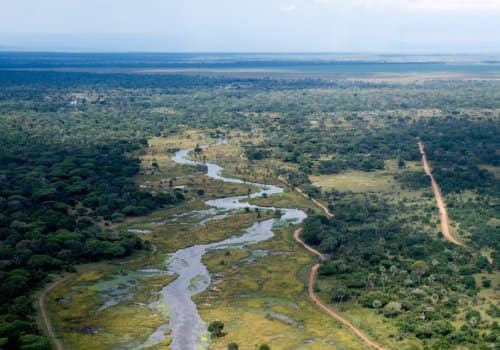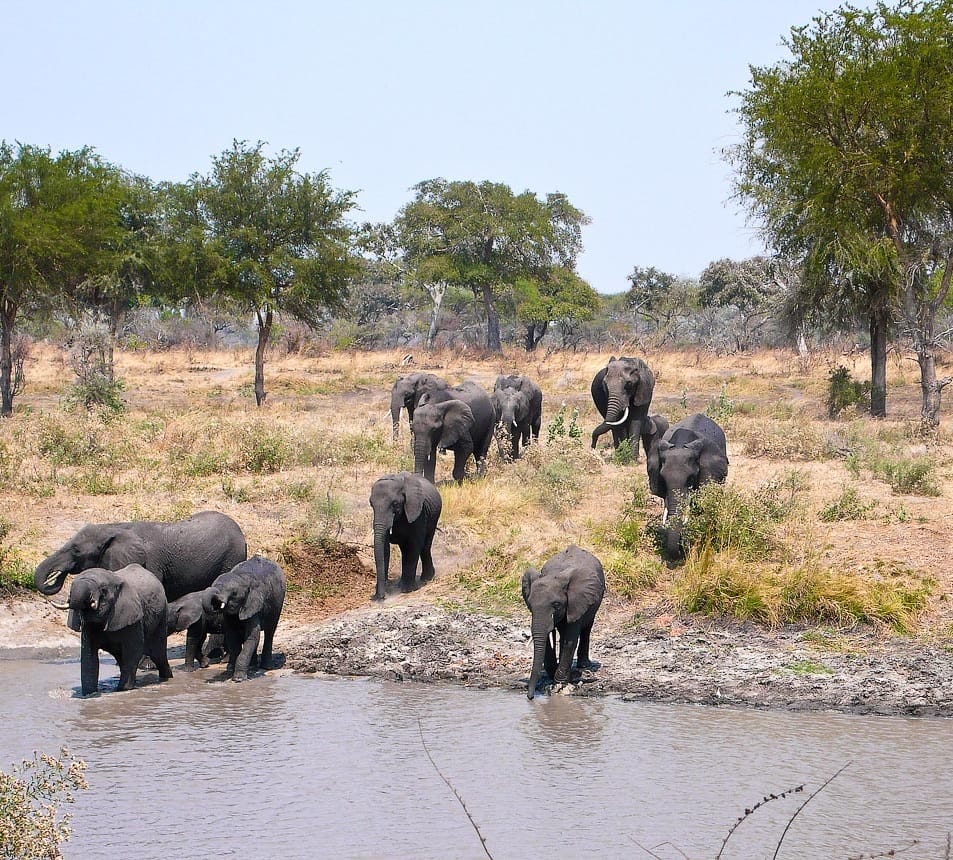Katavi National Park Tanzania

Discover the Untouched Wilderness of Katavi National Park
Nestled in the remote southwest of Tanzania, Katavi National Park is one of Africa’s unspoiled treasures. This vast wilderness, spanning over 4,471 square kilometers, is one of the largest national park in Tanzania and one of its least visited, offering intrepid travelers an exclusive glimpse into an untouched African landscape teeming with wildlife. In this blog post, we will explore the wonders of Katavi, from its sprawling savannas to its dense forests and life-giving rivers, making it a must-visit destination for those seeking an authentic safari experience.
The Journey to Katavi
Reaching Katavi National Park can be an adventure in itself. The park is isolated, with the nearest town being Mpanda, roughly 40 kilometers away. The easiest way to get there is by scheduled flight from Dar es Salaam to Mpanda or chartered aircraft from Dar es Salaam, Arusha, or other major cities in Tanzania. For those who prefer to travel overland, it’s a rugged journey that can take several days from Dar es Salaam or Arusha. This seclusion is precisely what has kept Katavi pristine and undisturbed, a secret haven for wildlife and a handful of lucky visitors.
An Untamed Landscape
The landscape of Katavi is diverse, ranging from floodplains that become lush marshes in the wet season to vast grasslands and dense woodlands. Its two dominant features are the Katuma River and the seasonal Lake Katavi and Lake Chada floodplains, which attract numerous animals during the dry season when water becomes scarce. The dramatic seasonal changes make Katavi a dynamic environment, where the struggle for survival is played out in an epic fashion every year.

A Wildlife Spectacle
With its rich ecosystems, Katavi National Park boasts an impressive array of wildlife. It is home to one of the largest populations of hippos and crocodiles in Tanzania, particularly visible in and around the remaining pools of the Katuma River during the dry season. The park is also renowned for its massive herds of buffalo and elephants, which roam the savannas in numbers rarely seen elsewhere on the continent.
Predators including lions, leopards, and spotted hyenas are frequently sighted as they stalk the large herbivore populations. The elusive wild dogs also roam the park’s vast expanses, although they can be harder to spot. For bird enthusiasts, Katavi does not disappoint, with over 400 bird species recorded, including the saddle-billed stork, various species of kingfishers, and the African fish eagle.

The Katavi Hippo Showdown
One of the most spectacular sights in Katavi is the hippopotamus showdown that occurs during the dry season. As the water dwindles, hippos congregate in the remaining muddy pools in numbers reaching the hundreds. These overcrowded conditions lead to territorial disputes, resulting in dramatic and noisy confrontations that are an unforgettable sight for visitors.
Things to do in Katavi National Park
Game Drives
The quintessential activity in any African safari park is the game drive, and Katavi does not disappoint. The park is known for its large herds of buffalo and elephants, as well as an impressive population of hippos and crocodiles, especially around the Katuma River and Lake Katavi. Game drives in Katavi are particularly special due to the low number of visitors the park receives. This means you’re far more likely to have wildlife sightings all to yourself, making for a deeply personal and unforgettable experience.
During the dry season (May to October), the animals congregate around the few remaining water sources, making this the best time for game viewing. You’ll see predators like lions, leopards, and spotted hyenas taking advantage of the easy prey, while the wet season (November to April) brings lush scenery and a plethora of birdlife, from waterfowl to colorful songbirds.
Walking Safaris
For those who want to connect with nature on a more intimate level, nothing beats a walking safari. Accompanied by an experienced guide and an armed ranger, you’ll tread the same paths as the wildlife, learning about the intricacies of the ecosystem. This is your chance to appreciate the smaller wonders of the bush, from the tracks left by a nocturnal civet to the industrious work of termites.
Walking safaris in Katavi are a sensory experience, where every rustle in the brush heightens your awareness and every fresh scent tells a story. The slower pace allows for a deeper understanding of the environment and the complex relationships between its inhabitants.
Night Drives
While most national parks in Tanzania close at dusk, Katavi offers the rare opportunity to embark on night drives. As darkness falls, the park transforms into a different world, where nocturnal creatures emerge from their daytime hideouts. With the help of spotlights, you may catch the reflective eyes of a bushbaby, the stealthy movement of a leopard, or the silent flight of an owl.
Night drives are a chance to witness the behaviors and interactions that only occur under the cover of darkness, adding another layer to the safari experience. The sounds of the African night—a lion’s roar or a hyena’s cackle—will send shivers down your spine and remain with you long after you leave.
Birdwatching
With over 400 bird species documented within its boundaries, Katavi National Park is a birdwatcher’s haven. The varied habitats—woodlands, swamps, rivers, and seasonal lakes—attract an array of birdlife, including pelicans, storks, waterfowl, and raptors. Whether you’re a seasoned birder with a lengthy life list or a casual observer, the park’s avian diversity is sure to impress.
The best time for birdwatching is during the wet season when migratory birds join the resident species, and the landscape is alive with breeding activity. Don’t forget to bring your binoculars and a good field guide to make the most of your birding experience.
Cultural Encounters: Meeting the Waliangulu and Sukuma Tribes
Katavi National Park is not only a place of natural wonders but also cultural richness. The park’s peripheral areas are inhabited by the Waliangulu and Sukuma tribes, known for their traditional hunter-gatherer and agro-pastoral lifestyles, respectively. Visiting these communities can offer insight into the local customs, beliefs, and the challenges of living in close proximity to wild animals.
Cultural tours may include watching tribal dances, participating in local crafts, or learning about medicinal plants used by the tribes. These encounters are a reminder of the deep connection between the people of Tanzania and their land, a relationship that has shaped the history and conservation of places like Katavi.
Planning to Visit Katavi National Park
When to Go
The best time to visit Katavi is during the dry season, from May to October, when wildlife viewing is at its peak. However, those who come during the wet season will be rewarded with a lush landscape and excellent birdwatching opportunities.
Getting There
Reaching Katavi National Park is an adventure in itself. The most common way to get there is by chartering a small plane from Arusha, Dar es Salaam, or other major cities in Tanzania. For those looking for an even more off-the-grid experience, it is possible to drive to Katavi, but be prepared for a long and challenging journey on rough, unpaved roads.
Where to Stay
Accommodation in Katavi is limited to a handful of tented camps and lodges, offering an intimate and exclusive safari experience. These range from comfortable mobile camps to more luxurious lodges with all the amenities. Booking well in advance is essential, especially during the dry season.
